#new york state council on the arts
Text
LANDSCAPE X ARCHITECTURE X ART
From the Louvre, to El Prado or Rijksmuseum, fascinating constructions all over the world have safeguarded and preserved art for our pleasure. Yet inside such imposing art temples, one can often feel small, perchance disconnected. Confined to a closed space, albeit amazing from an architectural standpoint, we reach more often than not, a level of art saturation and tend to seek out the open…

View On WordPress
0 notes
Text
a summary of the Monaco Tea, creds to the lovely anon who sent me the article <3
btw most of the information on the family was in article one, the latter were more just info on real estate + off shore accounts
again, this info is all coming from the former accountant of the family:
Prince Rainier III was seriously considering changing succession laws so Caroline would be the head of the family and Monaco as he found Albert to be weak. Albert is said to be the "despised member of the clan" who would stutter while speaking to his father. Rainier even looked into what this would mean to the Grimaldi name since Andrea - at the time 17 - obviously carries his father's name (Casiraghi) and not his mother's (Grimaldi). Rainier told the ones carrying the investigation that this was done in case Albert died.
the funds from Albert's state endowment and his private funds would be mixed all the time.
Albert would say yes to essentially everything his family asked for, including a $30 million apartment for Stephanie
Palmero (the accountant) would frequently buy things for the family to keep "their privacy". He bought Charlene's engagement ring and multiple properties for the Grimaldi's in France. He would pay property taxes for those properties and have the family pay him back.
Caroline and Stephanie would frequently make use of and sell family property (Rainier's cars, family jewelry and art, etc) without letting him know, even though they technically belonged to Albert.
Caroline is in charge of the family's castle in Marchais, which he had an issue with as she would always go off budget.
he makes a note to pay attention to Pierre Casiraghi as he is very ambitious and his dealings in real estate could create problems (spoiler alert: it did)
Caroline is said to hate Charlene
the allowance that Charlene, Caroline and Stephanie receive increases constantly, which worried Palmero. As of late, they were: 1,5 million euros for Charlene, 900.000 for Caroline and 800.000 for Stephanie yearly. This follows the family hierarchy.
Jazmin Grace receives 86,000 dollars per quarter. In February 2010, Palmero had to spend $5,000 “extra for her birthday”. Albert also bought her a $3 million apartment in New York City.
Albert spends almost a million a year funding Nicole Coste's (the mother of Albert's second illegimate child) fashion business. It's all in Alexandre Coste's name as Nicole fears that Charlene might create issues when Albert dies.
loots about Charlene. She frequently demands high sums in cash, her personal chef is $300 a day, she has multiple undocumented people from the Philippines working in her staff, the celebrations for the birth and baptism of the twins was well over half a million euros, in eight years Charlene spent around 15 million euros when she received 7.5 million euros in endowment (the Palace didn't deny this and said that the accountant was simply told to pay the difference with the family's personal funds), she spent 965,000 on a villa in two and a half months, her office decoration cost a million euros, she requested 3 x 300,000 for her brother's house.
Palmero made sure to change Monaco's regency laws so in case something happens to Albert while Jacques is underage Charlene won't be regent. Instead, the principality will be ruled by a regency council.
Albert has a secret apartment in Monaco, bought by one of Palmero's secret companies. He also got rid of problematic photographs of Albert (hinted at blackmail).
there was a whole system for hiding sums used on "special missions". They were labeled DS (for special destinations) and with time were used to pay for an informal intelligence unit that operated within the police force of the principality. They'd collect information on those close to the family and even on politians of the principality. He would also pay journalists to paint a good picture of Monaco while Hollande was president in France and was constantly criticizing tax-havens.
the DS accounts would be used to hide over-budget situations, including budget for the children's nannies and the budget for the wedding.
they were terrified of the Panama papers, as a lot of money laundering funds go through Monaco and the family had accounts on Panamanian banks.
a link between a Russian billionaire and the Monegasque Minister of Justice was revealed in 2017 and the Minister was forced to resign. An investigation was launched by a French judge and there was fears that the palace would be involved: jurisdictional immunity was granted to members of the sovereign family by order. There was rumours that the French judge wanted to hear the Prince as a witness......he was told to leave the principality. He was accused of having, through his “behavior perceived as authoritarian and vexatious”, “endangered the proper functioning of the criminal justice system”.
the real estate market is a big point of collision here and a big focus of article 3. Nothing too interesting to report - Palmero says he tried mingling in the market to break down the monopoly of real estate owners in Monaco (centered around a bestie of the Casiraghi brothers) while Albert claims Palmero had close ties with some of the developers and tried mingling with things that were of interest of the government in order to make money. The real estate issue was what eventually led Palmero to be fired. Palmero and a former laywer of Albert who was his childhood bestfriend and is also now a persona non grata claims that Albert is now fully under the influence of the bestie of the Casiraghi brothers who now controls the real estate in Monaco.
Palmaro is STILL paying property tax on properties he bought for the family!! crazy!!
Palmero detailed a number of off-shore accounts that hold about 250 million euros of the family's fortune including a company created specifically for Charlotte Casiraghi. He passed on the information from that account to Albert's new accountant at a monitored meeting.
Albert's explanation is lowkey....pathetic. He claims he told Palmero to move all of his family's assets from off-shore accounts to Monaco but Palmero never did it and that was that. He claims he was never able to obtain a precise statement on the family assets due to Palmero's secrecy and Albert just trusted him. He claims Palmero would act in his name and refuse to delay his decisions.
#and that's what you missed on glee#again thank u so much anon you're the best!!!!#this was a wild ride#mpf
92 notes
·
View notes
Note
Who do you consider to have been some of the most important / formative mayors of New York?
This is a great question, and actually rather difficult to answer, because for the longest time both Tammany Hall and the Whig/Republican machine tended to prefer mayors who were dull but reliable non-entities. Starting in 1824, NYC was divided into wards that elected Aldermen and Assistant Aldermen to the Board of Aldermen and the Board of Assistants, who together made up the bicameral Common Council. This led to a system whereby the real political action was shunted to the local level, where the ward's Aldermen and the ward boss (and his precinct bosses) ran the show.

The downfall of Boss Tweed led to some reforms, with the bicameral Common Council replaced by a unicameral Board of Aldermen who were elected from larger State Senate districts or at-large, as part of the Whig Party's drive to dilute the power of Tammany's Irish Catholic voting base. This would change somewhat when the five boroughs were consolidated into Greater New York in 1898, which added the borough presidents and the Board of Estimate into the mix, and then again in 1901 and so forth.
However, the overall trend was a weak mayor system where real political power was fairly evenly distributed between aldermen (who were not only the city's legislatures but were also represented on the Board of Estimate through their President), the borough presidents, the mayor, and the comptroller.
So the major players in NYC politics tended not to be mayors:

Dewitt Clinton was incredibly transformational, but despite serving three terms as mayor his real mark on New York was as governor where he was the driving force behind the construction of the Erie Canal.
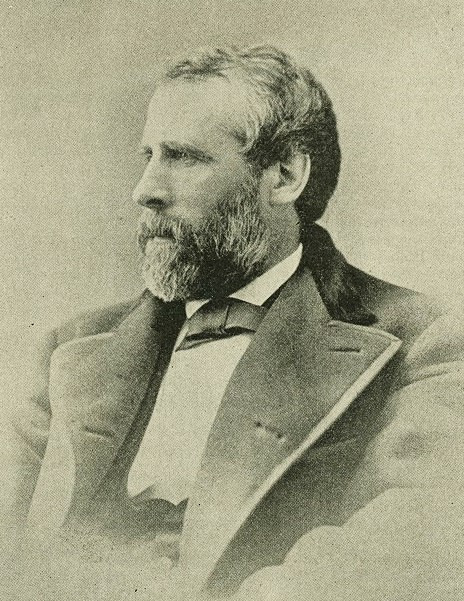
Andrew Haswell Green, the "Father of Greater New York," was responsible for the creation of Central Park, the New York Public Library, the Bronx Zoo, The Museum of Natural History, the Metropolitan Museum of Art, Riverside, Morningside, and Fort Washington Parks, Columbus Circle, and the consolidation of Greater New York - but he never served as mayor. The original Robert Moses, Green's political power came from his leadership of the Central Park Commission, the Greater New York Commission, a six-year stint in the Comptroller's office, and his position on a number of NGOs.
But if we're talking transformative mayors, there is one name that rises above all the rest: Fiorello goddamn LaGuardia.

There had been other reform mayors before him - Seth Low had established the Civil Service, John P. Mitchel brought scientific management to city government - but none of them had ever been able to get re-elected. Unlike the wealthy WASP reformers, LaGuardia knew how to beat Tammany at the ethnic politics game. Tammany's strength had always been in the Irish wards of the city, and while they had tried to divide-and-rule by promoting the naturalization of Russian and Polish Jews in return for them voting for Irish-American politicians in the Lower East Side while noticably neglecting the naturalization of Italians, the emergence of second-generation Jewish and Italian voters meant that this strategy had run its course.
Born to a Sephardic mother from Trieste and a lapsed Catholic father from southern Italy, Fiorello had an astonishing knack for transcending ethnic political boundaries in New York City - he spoke Italian, German, Yiddish, and Croatian, but he was also a progressive Republican and Episcopalian (which meant he could speak middle-class WASP too). LaGuardia won the 1933 mayoral election by bringing together a Fusion coalition that brought middle class German-American Republicans together with Italians and Jews, a coalition that he would expand in 1936 by bringing socialists, unions, and black voters together into the American Labor Party.
Over his twelve years as Mayor, LaGuardia was almost pathologically active (in a way that's oddly reminiscent of Henry II), transforming almost every aspect of New York City:
Jobs for the Unemployed:
LaGuardia's immediate mission as mayor was to fight the Great Depression that had had left a third of the City unemployed. He did this by forming an enduring alliance with FDR in which the New Deal would provide NYC with unpredecented level of federal support in exchange for NYC becoming the New Deal's model city - the first of the "Little New Deals." In his first hundred days in office, LaGuardia convinced FDR to give New York City a full 20% of the Civil Works Administration's work relief budget. This put 200,000 New Yorkers back to work - and this would only be the beginning of New York City's experiments with direct job creation.
As part of Fiorello LaGuardia's "Little New Deal," LaGuardia's new Parks Department employed 70,000 workers - paid for by CWA and later WPA money - to rebuild New York City's parks, constructing the Central Park Zoo and 60 playgrounds in the first year.
When the New Deal created the Works Progress Administration in 1935, LaGuardia once again lobbied FDR to put NYC first in line. This culminated in some 700,000 New Yorkers - a tenth of the city's entire population - getting jobs through the WPA and other New Deal programs. Together with the Parks Department, LaGuardia and Robert Moses would mobilize this workforce to completely transform the city.
Public Works:
This is where we have to discuss Fiorello LaGuardia's fateful decision to make Robert Moses his master builder. While Moses was in the process of becoming the "Power Broker" before LaGuardia - he had already been made president of the Long Island State Park Commission and chairman of the New York State Council of Parks - LaGuardia enabled his ascent to the heights of power by making him Parks Commissioner, Commissioner and then Chairman of the Triborough Bridge Authority, Commissioner of the NYC Planning Commission, and Chairman of the Emergency Public Works Commission.
The pact between them was simple: LaGuardia would give Moses the public appointments he needed to consolidate public works across the city and would steer New Deal public works money through Moses' agencies, and in exchange Moses would be LaGuardia's master builder with a mandate to "build it quickly and build it well." This was not an easy task, because Robert Moses was a political enemy of FDR and FDR tried to bar him from being given any WPA or PWA funding, but the mayor was able to persuade Roosevelt that it was more important that LaGuardia's proposed $1 billion public works program for NYC be carried at speed and administered efficiently.
As LaGuardia's workhorse, Moses would oversee almost all of NYC's public works, including the West Side Highway, the future FDR Drive, the Brooklyn Battery Tunnel, the Triborough Bridge, the LaGuardia and future JFK Airports, and Jones Beach Park, among others. LaGuardia would also construct the Sixth Avenue Subway line, the Queens-Midtown Tunnel and the Lincoln Tunnel without Moses (who was completely uninterested in mass transit and who always preferred bridges to tunnels).
In addition to these major projects, LaGuardia with and without Moses built the city's first municipal power plants, 37 sewage treatment plants, 9 fire houses, 142 elementary schools and 22 high schools, half of NYC's then-23 municipal hospitals, eight District Health Centers to provide preventative, specialized, and public health immunization care, and the first 14 of the City's public housing projects.
City Government:
To dismantle Tammany's patronage system, he began to massively expand the civil service to eliminate patronage jobs, and then when Tammany beat him on a government reform bill in 1934, he simply kept pushing. He pushed through the LaGuardia Reform Charter of 1938 that abolished the Tammany-dominated Board of Aldermen and replaced it with a City Council elected by Single Transferrable Vote, established the Board of Estimate as a central administrative body with powers over the city budget, public contracts, franchises, and land use - crippling Tammany's ability to raise money through graft and kickbacks.
To transform New York City into a "strong mayor" model, he undertook a campaign of transforming independent agencies scattered across the five boroughs into a system of unified citywide departments or public authorities that answered directly to the mayor and gave him unprecedented state capacity. In 1934, he formed the Parks Department and the New York City Housing Authority; in 1936 he formed the Department of Buildings and the City Planning Commission; in 1938, he restructured the Department of Welfare to run the city's social welfare programs and a massively expanded public hospital system; in 1940, he took over the IRT (operating the 1, 2, 3, 4, 5, 6), and the BMT and IND (operating the A, B, C, D, E, F, G, J, L, M, N, Q, R, W, and Z lines), unifying the NYC subway system for the first time.
To deal with police corruption, LaGuardia appointed Lewis Valentine to purge the NYPD so that the mayor could use it (and Thomas Dewey) in a crusade against the mafia's gambling, racketeering, and vice operations. This marked a rare period of honesty and effectiveness in the NYPD, although after WWII the system of protection rackets and mafia corruption would eventually re-establish itself.
Ironically, this exhaustive list of accomplishments really made it hard for later mayors to distinguish themselves, because mostly their task was completing, managing, or mis-managing the system that LaGuardia had built. After LaGuardia I would say that Robert Wagner Jr. (established public sector collective bargaining, created CUNY, Lincoln Center, Shakespeare in the Park, and dealt the killing blow to Tammany) and John Lindsay (see my previous post, but chiefly scatter-site housing, the civilian complaint review board, and the Knapp Commission on police corruption) are on my list of formative mayors.
After them, there have been long-serving mayors and good mayors, but unfortunately not the two combined.
#history#historical analysis#nyc history#nyc mayor#fiorello laguardia#tammany hall#urban history#urban studies#urban politics#political machines#new deal#robert moses#infrastructure
28 notes
·
View notes
Text


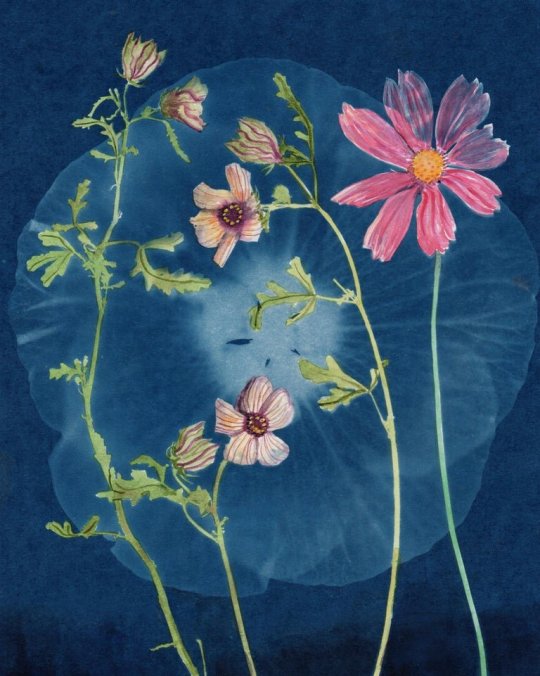


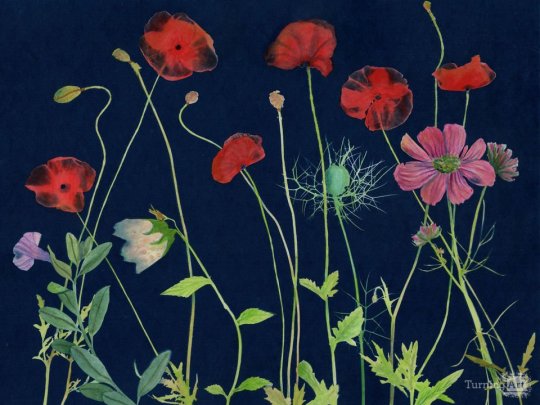
Julia Whitney Barnes in an artist living in the Hudson Valley who works in a variety of media from cyanotypes, watercolour, oil paintings, ceramic sculptures, murals, and site-specific installations. She has exhibited widely in the United States and internationally. She was awarded fellowships from New York State Council on the Arts, Arts Mid-Hudson, Lower Manhattan Cultural Council, Abbey Memorial Fund for Mural Painting/National Academy of Fine Arts, and the Gowanus Public Art Initiative, among others.
89 notes
·
View notes
Text
Okay I Could do work but instead I'm going to write about the time shostakovich had the worst time in america
(So, despite the clickbaity title, this will be more of a serious post. I wrote about the topic a few years ago on Reddit , and I'll be citing a lot of the same sources as I cited there, because there are some good ones, along with some new information I've gathered over the years. This was going to be a video essay on my youtube channel, but I sort of kept putting it off.)
The Scientific and Cultural Congress for World Peace, held in New York in 1949, is a particularly fascinating event to study when it comes to researching Shostakovich because of just how divisive it was. True, the event itself, which only lasted a few days, doesn’t get as much spotlight as the Lady Macbeth scandal or the posthumous “Shostakovich Wars,” but you’ll find that when reading about the Peace Conference, as I’ll be referring to it here for the sake of brevity, many of the primary accounts of it never quite tell the full story. The Peace Conference was held during a volatile time, both in Soviet and American politics, as Cold War tensions were on the rise and an ideological debate between capitalism and communism gradually extended to become the focus of seemingly every factor of life- not just politics and economics, but also the sciences, culture, and the arts.
While artists on both sides were frequently cast in different roles in order to create or destroy the image of Soviet or American cultural and ideological superiority, the image either government sought to cast was sometimes contradictory with the sentiments of the artists themselves. For instance, while the CIA-founded Congress of Cultural Freedom (CCF) sent African American jazz musician Louis Armstrong on various tours around the world to promote jazz as American culture and dispel perceptions of racism in America, Armstrong canceled a trip to the Soviet Union in order to protest the use of armed guards against the integration of Black students at Central High School in Little Rock, Arkansas, in 1957. Meanwhile, the Soviet government’s use of international diplomatic missions by artists as cultural warfare also reflected a desire to portray themselves as the dominant culture, despite the tensions and complications that existed for artists at home. When the Soviet Union sent Dmitri Shostakovich to New York in March 1949 for the Peace Conference, such cultural contradictions are why the conference occurred the way it did, and why Shostakovich’s image has received so much controversy, both in Russia and in the west.
If you’re familiar with Soviet history, you may be familiar with the term Zhdanovshchina, which refers to a period of time between 1946 and 1948 in which Andrei Zhdanov, the Central Committee Secretary of the Soviet Union, headed a number of denunciations against prominent figures in the arts and sciences. Among musicians, Shostakovich was one of the most heavily attacked, likely due to his cultural standing, with many of his pieces censored and referred to as “formalist,” along with his expulsion from his teaching positions at the Moscow and Leningrad conservatories. During this time, Shostakovich often resorted to writing film and ideological music in order to make an income.
Meanwhile, in the United States, as fears of nuclear war began accumulating, peace movements between the two superpowers were regarded more and more as pro-Communist, an opinion backed by the House Committee of Un-American Activities (HUAC). The Waldorf-Astoria Peace Conference, to be held from March 25-27th 1949, was organized by the National Council of Arts, Sciences, and Professions, a progressive American organization, and was to feature speeches held by representatives of both American and Soviet science and culture. Harlow Shapely, one of the conference’s organizers, stated that he intended for the conference to be “non-partisan” and focused on American and Soviet cooperation.
On the 16th of February, 1949, Shostakovich was chosen to be one of the six Soviet delegates to speak at the conference. This was largely due to his fame in the west, where both his Seventh and Eighth Symphonies met a mostly positive reception. Shostakovich initially did not want to go to the conference, stating in a letter to the Agitprop leader Leonid Ilichev that he was suffering from poor health at the time and wasn’t feeling up to international travel and performances. He also said that if he were to go, he wanted his wife Nina to be able to accompany him, but he ended up being sent to New York without any members of his family- perhaps to quell concerns of defection (recall the amount of artists who defected around the time of the 1917 revolution, including notable names such as Rachmaninov and Heifetz).
Stalin famously called Shostakovich on the phone that same day to address the conference, and again, Shostakovich told him he couldn’t go, as he was feeling unwell. Sofia Khentova’s biography even states that Shostakovich actually did undergo medical examinations and was found to be sick at the time, but Stalin's personal secretary refused to relay this information. Shostakovich's close friend Yuri Levitin recalls that when Stalin called Shostakovich on the phone to ask him to go to the conference (despite the fact he had been chosen to go in advance), Shostakovich offered two reasons as to why he couldn't go- in addition to his health, Levitin claims that Shostakovich also cited the fact that his works were currently banned in the Soviet Union due to the Zhdanov decree, and that he could not represent the USSR to the west if his works were banned. While accounts of the phone call vary, the ban on Shostakovich's works was indeed lifted by the time he went to New York for the conference.
When Shostakovich arrived in New York, general anti-Communist sentiment from both Americans and Soviet expatriates, as well as media excitement, resulted in a series of protests in front of the Waldorf Astoria hotel where the conference was to be held, with some of the protesters directly referencing Shostakovich himself, as he was the most well-known Soviet delegate on the trip. In 1942, Shostakovich's 7th ("Leningrad") Symphony was performed in the United States under Toscanini and the NBC Symphony Orchestra to high acclaim, helping to promote the idea of allyship with the Soviet Union in the US during the war, and Americans were aware of the Zhdanov denunciations in 1948, as well as the previous denunciations that Shostakovich had suffered in 1936 as a result of the scandal surrounding his opera "Lady Macbeth of the Mtsensk District." So by 1949, many people in American artistic circles had a sympathetic, if not completely understanding, view of Shostakovich during the birth of the Cold War. They viewed him as a victim of Communism and the Soviet state, who was forced to appease it in order to stay in favor, and as a result, could potentially voice his dissent with the system once in the west. Pickets visible in footage from the protests outside the Waldorf Astoria carried slogans such as "Shostakovich, jump thru [sic] the window," a likely reference to Oksana Kosyankina, a Soviet schoolteacher who had reportedly jumped out of a window in protest (although the details of this story would be found to be highly dubious). Meanwhile, another sign read "Shostakovich, we understand!," a statement that would prove to be deeply ironic.
At the conference itself, Shostakovich did not jump through the window, nor did he attempt any form of dissent. Instead, an interpreter read through a prepared speech as he sat on stage in front of a crowd of about 800. The speech praised Soviet music, denounced American "warmongering," and claimed that Shostakovich had accepted the criticism of 1948, saying it "brought his music forward."
Many in the audience could see that Shostakovich was visibly nervous- he was "painfully ill at ease," and Nicholas Nabokov (brother of the writer Vladimir Nabokov) remarked that he looked like a "trapped man." Arthur Miller recalled he appeared "so scared." As they noticed how nervous he looked, some of those in attendance sought to make a demonstration of him in order to illustrate Soviet oppression in contrast to the freedoms supposedly enjoyed by American artists, asking him intentionally provocative questions that they knew he would not be able to answer truthfully. From Nicholas Nabokov:
After his speech I felt I had to ask him publicly a few questions. I had to do it, not in order to embarrass a wretched human being who had just given me the most flagrant example of what it is to be a composer in the Soviet Union, but because of the several thousand people that sat in the hall, because of those that perhaps still could not or did not wish to understand the sinister game that was being played before their eyes. I asked him simple factual questions concerning modern music, questions that should be of interest to all musicians. I asked him whether he, personally, the composer Shostakovich, not the delegate of Stalin’s Government, subscribed to the wholesale condemnation of Western music as it had been expounded daily by the Soviet Press and as it appeared in the official pronouncements of the Soviet Government. I asked him whether he, personally, agreed with the condemnation of the music of Stravinsky, Schoenberg, and Hindemith. To these questions he acquiesced: ‘Yes,’ he said, ‘I completely subscribe to the views as expressed by … etc….’ When he finished answering my questions the dupes in the audience gave him a new and prolonged ovation.
During the discussion panel on March 26th, music critic Olin Downes delivered yet another provocative statement towards Shostakovich:
I found both of your works [the 7th and 8th Symphonies] too long, and I strongly suspected in them the presence of a subversive influence—that of the music of Gustav Mahler.
For Shostakovich, and anyone knowledgeable of Soviet politics and music at the time, it's not hard to see why Downes had explicitly mentioned Mahler. Gustav Mahler (1860-1911) was a highly influential composer when it came to 20th century western music, particularly with regards to the avant-garde movement pioneered by the Second Viennese School- Arnold Schoenberg, Anton Webern, and Alban Berg. Shostakovich was also heavily influenced by Mahler, but such influences were frowned upon in the mid-30s to 50s Soviet Union. Mahler's style was decidedly more "western," and it's potentially for this reason that Shostakovich's 4th Symphony- perhaps his most "Mahlerian," was withdrawn from performance before its premiere in 1936, having followed the "Lady Macbeth" denunciations. To tie Shostakovich to Mahler would be to point out his direct western influences, while he was being made to issue statements that rejected them. During his speech, Shostakovich made statements criticizing Stravinsky and Prokofiev- two composers who had emigrated and adopted western-inspired neoclassical styles (although Prokofiev returned to the Soviet Union in 1936). Stravinsky had taken insult to Shostakovich's comments against him, and carried an animosity towards Shostakovich that appeared once again in their meeting in 1962, according to the composer Karen Khachaturian.
On the last day of the conference, March 27th, Shostakovich performed the second movement of his Fifth Symphony on piano at Madison Square Garden to an audience of about 18,000, and had received a massive ovation, as well as a declaration of friendship signed by American composers such as Bernstein, Copland, Koussevitzky, and Ormandy. He returned to the Soviet Union on April 3.
In addition to the 1948 denunciations, in which Shostakovich was pressured to make public statements against his own works, the likely humiliation he endured at the 1949 conference played a role in cementing his dual "public" and "private" personas. For the rest of his life, Shostakovich displayed mannerisms and characteristics at official events that were reportedly much different from those he displayed among friends and family. For the public, and for researchers after his death, it became difficult to determine which statements from him reflected his genuine sentiments, and which ones were made to appease a wider political or social system.
Both the Soviet Union and the west had treated Shostakovich as a means of legitimizing their respective ideologies against one another, a trend that continued long after his death in 1975 and the fall of the USSR in 1991. The publication of his purported memoirs, "Testimony," allegedly transcribed by Solomon Volkov, fueled this debate among academics and artists, becoming known as the "Shostakovich wars." The feud over the legitimacy of "Testimony," however, stood for something much larger than the credibility of an alleged historical document- as historians and musicologists debated whether or not it was comprised of Shostakovich's own words and sentiments towards the Soviet Union, its political systems, and its artistic spheres, they were largely seeking to prove the credibility of their stances for or against Soviet or western superiority. "Testimony" helped evolve the popular western view of Shostakovich as well, from a talented but helpless puppet at the hands of the regime, to a secret dissident bravely rebelling against the system from inside.
Modern Shostakovich scholars, however, will argue that neither of these views are quite true- as more correspondence and documents come to light, and more research is conducted, a more complete view of Shostakovich has been coming into focus over the past decade or so. Today, many academics tend to view Shostakovich and the debate over his ideology with far more nuance- not as a cowardly government mouthpiece or as an embittered undercover rebel, but as a multifaceted person who made difficult decisions, shaped by the varying time periods he lived in, whose actions were often determined by the shifting cultural atmospheres of those time periods, along with his own relationships with others and the evolution of his art. We can be certain Shostakovich did not approve of Stalin's restrictions on the arts- his posthumous work "Antiformalist Rayok," among other pieces of evidence from people he knew, makes that very clear- but many nuances of his beliefs are still very much debated. There has also been a shift away from judging Shostakovich's music based on its merit as evidence in the ideological dispute, and rather for its quality as artwork (something I'm sure he would appreciate!). As expansive as Shostakovich research has become, one thing has become abundantly clear- none of us can hope to truthfully make the statement, "Shostakovich, we understand."
Sources for further reading:
Articles:
Shostakovich and the Peace Conference (umich.edu)
Louis Armstrong Plays Historic Cold War Concerts in East Berlin & Budapest (1965) | Open Culture
Biographical and Primary Sources:
Laurel Fay, "Shostakovich, a Life"
Pauline Fairclough, "Critical Lives: Dmitry Shostakovich"
Elizabeth Wilson, "Shostakovich, a Life Remembered"
Mikhail Ardov, "Memories of Shostakovich"
HUAC Report on Peace Conference
Video Sources and Historic Footage:
Arthur Miller on the Conference
"New York Greets Mr. Bevin and Peace Conference Delegates"
"Shostakovich at the Waldorf"
"1949 Anti Communism Protest"
"Battle of the Pickets"
#shostakovich#dmitri shostakovich#long post#history#soviet history#classical music#music history#1940s history#new york#russian history#cold war#composers#classical composer#my god this feels good to get out of my drafts
17 notes
·
View notes
Text
President Zelenskyy and First Lady Zelenska visit the US (Live Blog)
(Updates as reblog)
They officially arrived in New York and will attend the UNGA.
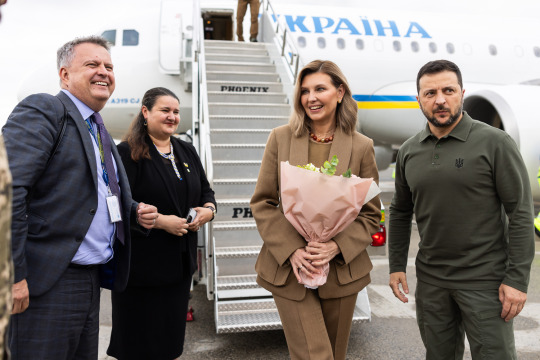


Zelenskyy: "Together we arrived in New York to participate in the events of the 78th session of the UN General Assembly. The topic of discussion this time is "Restoring Trust and Global Solidarity". Ukraine is well aware of the importance of both. We have a lot to say. So, we have important and busy days ahead. The Security Council. The Sustainable Development Goals Summit. Important bilateral meetings.
The territorial integrity of a state is a key principle of all basic international documents, including the UN Charter. And it is necessary to restore it to its full strength, which was destroyed by the Russian invasion. Ukraine will make a clear proposal to UN members on this.
Talks are planned in Washington with the President of the United States, with leaders of the chambers and parties of Congress, and with the military leadership.
@olenazelenska_official will make several speeches on the sidelines of the UN General Assembly. In particular, she will talk about Ukrainian children and what they are forced to go through because of the enemy attack. She will discuss medical partnership for Ukraine and saving lives with the WHO Director-General. She will also meet with the Clinton family, friends and patrons of the arts who support Ukraine, and together with UNESCO, open an exhibition dedicated to the destruction of Ukrainian cultural heritage. By the way, recently St Sophia of Kyiv and the historic centre of Lviv were included in the UNESCO Special List of Monuments in Danger. -
Solidarity - human and global - remains the only remedy against barbarism and aggression."
29 notes
·
View notes
Text
Damian 👑 😈
prstrongwepa:
Luis Martínez is a Puerto Rican professional wrestler. He is currently signed to WWE, where he performs on the Raw brand under the ring name Damian Priest.
He is a member of The Judgment Day stable and is the current World Heavyweight Champion in his first reign.
Martínez was born in New York City to Nuyorican parents, but raised in the municipality of Dorado, Puerto Rico. While living in Dorado, he saw the World Wrestling Council on television and developed an interest in becoming a pro wrestler. He learned Japanese Gōjū-ryū karate from his martial artist father. After winning two national championships in full-contact martial arts, Martínez decided to embark on a career in professional wrestling. When he returned to the States, Spanish was still his first language and he underwent a period of cultural adaptation. He was 10 years old when he returned and lived primarily in The Bronx
#wwe #wwecommunity #wrestlemania #boricua #puertorican #puertorico #prstrongwepa
Felicidades al nuevo campeón mundial de peso pesado Damian Priest 👑🇵🇷
Congratulations to the new world heavyweight champion Damian Priest 👑🇵🇷
8 notes
·
View notes
Text
This day in history
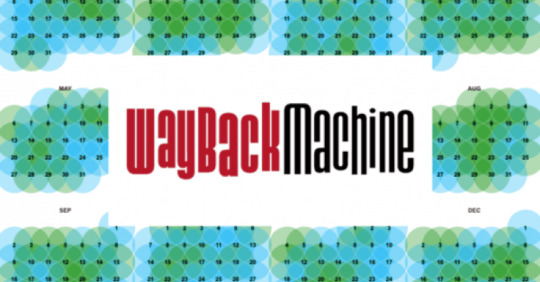
I'm touring my new, nationally bestselling novel The Bezzle! Catch me SATURDAY (Apr 27) in MARIN COUNTY, then Winnipeg (May 2), Calgary (May 3), Vancouver (May 4), and beyond!

#15yrsago EU Parliament passes copyright term extension, rejects proposal to give the addition funds to artists https://www.openrightsgroup.org/blog/parliament-buckles-copyright-extension-goes-through-to-council-of-ministers/
#10yrsago How science fiction influences thinking about the future https://www.smithsonianmag.com/arts-culture/how-americas-leading-science-fiction-authors-are-shaping-your-future-180951169/?no-ist
#10yrsago Obama official responsible for copyright chapters of TPP & ACTA gets a job at MPAA; his replacement is another copyright lobbyist https://www.vox.com/2014/4/22/5636466/hollywood-just-hired-another-white-house-trade-official
#10yrsago Having leisure time is now a marker for poverty, not riches https://www.economist.com/finance-and-economics/2014/04/22/nice-work-if-you-can-get-out
#10yrsago Eternal vigilance app for social networks: treating privacy vulnerabilities like other security risks https://freedom-to-tinker.com/2014/04/21/eternal-vigilance-is-a-solvable-technology-problem-a-proposal-for-streamlined-privacy-alerts/ #10yrsago How the Russian surveillance state works https://web.archive.org/web/20140206154124/http://www.worldpolicy.org/journal/fall2013/Russia-surveillance
#5yrsago Political candidate’s kids use his election flyers to fool his laptop’s facial recognition lock https://twitter.com/mattcarthy/status/1120641557886058496
#5yrsago Fool me twice: New York State commutes Charter’s death sentence after Charter promises to stop breaking its promises https://arstechnica.com/tech-policy/2019/04/charter-avoids-getting-kicked-out-of-new-york-agrees-to-new-merger-conditions/
#5yrsago Greta Thunberg attributes her ability to focus on climate change to her Asperger’s https://www.youtube.com/watch?v=hKMX8WRw3fc
#5yrsago A Sanders candidacy would make 2020 a referendum on the future, not a referendum on Trump https://www.theguardian.com/us-news/2019/apr/22/bernie-sanders-democrats-trump-2020
#5yrsago EU to create 350m person biometric database for borders, migration and law enforcement https://www.zdnet.com/article/eu-votes-to-create-gigantic-biometrics-database/
#1yrsago A Collective Bargain https://pluralistic.net/2023/04/23/a-collective-bargain/
7 notes
·
View notes
Photo
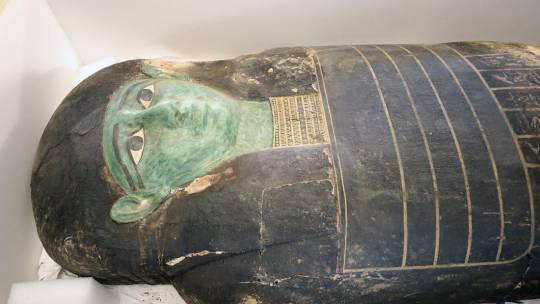



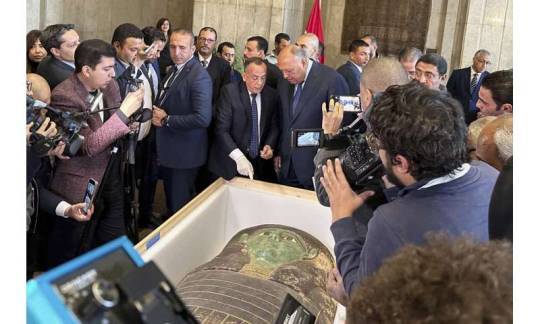
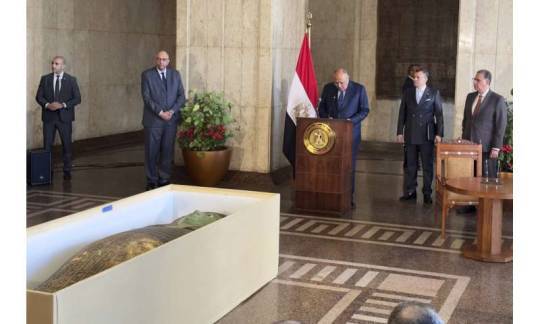
Looted Ancient Green Sarcophagus Returned to Egypt from US
An ancient wooden sarcophagus that was featured at the Houston Museum of Natural Sciences was returned to Egypt after U.S. authorities determined it was looted years ago, Egyptian officials said Monday.
The repatriation is part of Egyptian government efforts to stop the trafficking of its stolen antiquities. In 2021, authorities in Cairo succeeded in getting 5,300 stolen artifacts returned to Egypt from across the world.
Mostafa Waziri, the top official at the Supreme Council of Antiquities, said the sarcophagus dates back to the Late Dynastic Period of ancient Egypt, an era that spanned the last of the Pharaonic rulers from 664 B.C. until Alexander the Great's campaign in 332 B.C.
The sarcophagus, almost 3 meters (9.5 feet) tall with a brightly painted top surface, may have belonged to an ancient priest named Ankhenmaat, though some of the inscription on it has been erased, Waziri said.
It was symbolically handed over at a ceremony Monday in Cairo by Daniel Rubinstein, the U.S. chargé d'affaires in Egypt.
The handover came more than three months after the Manhattan District Attorney's Office determined the sarcophagus was looted from Abu Sir Necropolis, north of Cairo. It was smuggled through Germany into the United States in 2008, according to Manhattan District Attorney Alvin L. Bragg.
"This stunning coffin was trafficked by a well-organized network that has looted countless antiquities from the region," Bragg said at the time. "We are pleased that this object will be returned to Egypt, where it rightfully belongs."
Bragg said the same network had smuggled a gilded coffin out of Egypt that was featured at New York's Metropolitan Museum. Met bought the piece from a Paris art dealer in 2017 for about $4 million. It was returned to Egypt in 2019.
#Looted Ancient Sarcophagus Returned to Egypt from US#stolen antiquities#stolen artifacts#Abu Sir Necropolis#Late Dynastic Period#ancient artifacts#archeology#archeolgst#history#history news#ancient history#ancient culture#ancient civilizations#ancient egypt#egyptian history
62 notes
·
View notes
Text
A top American diplomat who used to be the US ambassador to Bolivia has been arrested for allegedly secretly working as a Cuban spy.
Manuel Rocha, 73, was taken into custody in Miami on Friday in what marked the culmination of a long-running FBI counterintelligence investigation, according to the Associated Press.
Two sources told the agency that Mr Rocha is accused of secretly working to promote the Cuban government’s interests.
Investigators allege that this is a violation of the Foreign Agents Registration Act – a law which requires any individual lobbying and doing the political bidding of a foreign government on US soil to register with the Justice Department.
Further details about the 73-year-old’s alleged work as a Cuban government agent are expected to be revealed on Monday when he appears in federal court.
Neither the DOJ or Mr Rocha has yet publicly commented on his arrest.
Mr Rocha’s wife Karla Wittkop Rocha refused to comment and hung up the phone when reached for comment by the AP.
The bombshell arrest comes after Mr Rocha has spent 25 years working as a top US diplomat in several Latin American countries.
His diplomatic postings included a stint at the US Interests Section in Cuba during a time when the US lacked full diplomatic relations with Fidel Castro’s communist government.
Born in Colombia, Mr Rocha was raised in a working-class home in New York City and went on to obtain a succession of liberal arts degrees from Yale, Harvard and Georgetown before joining the foreign service in 1981.
He was the top US diplomat in Argentina between 1997 and 2000 as a decade-long currency stabilisation program backed by Washington was unraveling under the weight of huge foreign debt and stagnant growth, triggering a political crisis that would see the South American country cycle through five presidents in two weeks.
At his next post as ambassador to Bolivia, he intervened directly into the 2002 presidential race, warning weeks ahead of the vote that the US would cut off assistance to the poor South American country if it were to elect former coca grower Evo Morales.
“I want to remind the Bolivian electorate that if they vote for those who want Bolivia to return to exporting cocaine, that will seriously jeopardise any future aid to Bolivia from the United States,” Mr Rocha said in a speech that was widely interpreted as a an attempt to sustain US dominance in the region.
The gambit worked but three years later Bolivians elected Morales anyway and the leftist leader would expel Rocha’s successor as chief of the diplomatic mission for inciting “civil war”.
Mr Rocha also served in Italy, Honduras, Mexico and the Dominican Republic, and worked as a Latin America expert for the National Security Council.
Following his retirement from the State Department, Mr Rocha began a second career in business, serving as the president of a gold mine in the Dominican Republic partly owned by Canada’s Barrick Gold.
More recently, he’s held senior roles at XCoal, a Pennsylvania-based coal exporter; Clover Leaf Capital, a company formed to facilitate mergers in the cannabis industry; law firm Foley & Lardner and Spanish public relations firm Llorente & Cuenca.
9 notes
·
View notes
Text
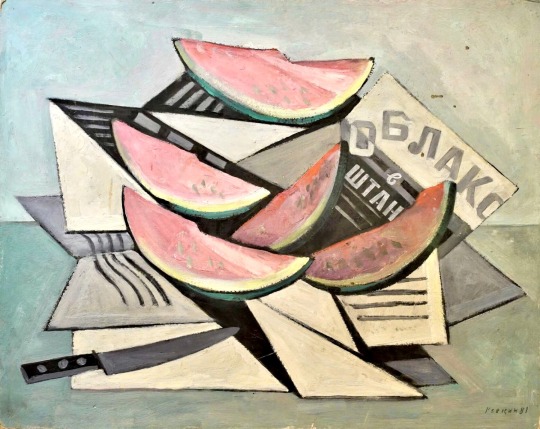
Vladimir Roskin "Still life with watermelons and newspapers"
1981. Plywood, oil.
Roskin Vladimir Osipovich (1896 - 1984)
Moscow painter, illustrator, exhibition designer. He studied fine arts in Sunday classes of the Stroganov School, the school of F.I. Rerberg, I.I.'s studio Mashkov, Moscow School of Painting, Sculpture and Architecture. Collaborated with V. Mayakovsky in "Windows of GROWTH." He worked as an illustrator in the publishing houses Gosizdat, Federation, Soviet Writer. In 1928, together with the team of E. Lisitsky participated in the design and design of the International Press Exhibition in Cologne. He worked as a designer at major international exhibitions in London in 1930, in Leipzig in 1932, in Paris in 1937, in New York in 1938, etc. In 1967, he was dismissed from the post of chairman of the artistic council of the KDOI for supporting young artists, but continued to write. His works are in the State Museum of Fine Arts named after Pushkin, State Tretyakov Gallery, State Museum named after V.V. Mayakovsky, the State Literary Museum, as well as in private collections.
Vellum
28 notes
·
View notes
Video
The good vibes are implied at First Saturday: Pride. 🏳️🌈
Join us on June 3 for performances, art-making, an exciting exhibition tour of Oscar yi Hou: East of sun, west of moon, and much more.
This event is free, but registration is required. So get your group together quickly because admission is subject to our capacity at the time of your arrival.
Bank of America is a proud sponsor of First Saturdays 25th Anniversary Season. June First Saturday is presented by Perrier and Con Edison. Additional support provided by: Brooklyn Borough President Antonio Reynoso, Charles H. Revson Foundation, New York State Council on the Arts.
🎟️ https://bit.ly/3pZ5Pn4
14 notes
·
View notes
Text
KE AUPUNI UPDATE - MARCH 2024

At the UN in Geneva...
For three or four times a year since 2010, I have been attending meetings at the UN in Geneva, and likewise at the UN in New York. The primary purpose for attending these UN meetings is to promote... “Hawaiʻi. our story and our future”... where we have been and where we would like to go. By using the art of diplomacy (talking story and making friends), we have broken down the lies the US had spread about Hawaiʻi being a US “state” (as evidenced by numerous stories in UN and European publications), and we have succeed in developing sympathy and support for the restoration of Hawaiʻi as a sovereign, independent nation.
I am currently at the massive UN headquarters in Geneva, Switzerland attending the 55th Session of the UN Human Rights Council. This past week I have touched bases with diplomats, UN experts, non-governing organizations (NGOs), the press and other stake-holders in the international human rights arena. Next week I will be on a panel on self-determination sponsored by the Kashmiri independence movement. I will also participate in a press conference with Alaska representatives and Dr. Alfred deZayas on calling for review of UNGA Resolution 1469.
Here is the short oral statement I delivered at the Human Rights Council asserting our diplomatic protest to the US illegal occupation of our islands and reiterating our status as a sovereign, independent nation in continuity.
Aloha Mr. President:
This intervention is a diplomatic protest of the ongoing, systematic violations of human rights in the Hawaiian Islands and how the matter can be peacefully remedied.
The United Statesʻ illegal occupation of Hawaii, has caused the people of Hawaii tremendous harm. The tragic fire that destroyed the historic town of Lahaina on August 8, 2023 is a foreboding of where the rest Hawaii is headed should the U.S. maintain its stranglehold on our islands.
The U.S. and its settler population has used judicial corruption to dispossess Hawaiians of our lands (as in the current case of Mme Routh Bolomet); robs Hawaiians of our livlihoods, way of life and social structures; creating an environment that is so inhospitable and toxic that more than half of native Hawaiians have fled the islands just to survive.
The huge presence of the US military in Hawaii puts Hawaiians in imminent danger of instant nuclear annihilation by enemies of the U.S. But unlike Japan’s sneak attack on Pearl Harbor in 1941, the next attack on US Military installations in Hawaii will wipe out everything. The people would be gone and the entire island of Oʻahu will look like Lahaina does now.
The remedy would begin with the United Nations General Assembly reviewing Resolution 1469 to correct its error, and ending its complicity in the occupation of Hawaii by the U.S.
“Love of country is deep-seated in the breast of every Hawaiian, whatever his station.” — Queen Liliʻuokalani
----------
Ua mau ke ea o ka ʻāina i ka pono. The sovereignty of the land is perpetuated in righteousness.
------
For the latest news and developments about our progress at the United Nations in both New York and Geneva, tune in to Free Hawaii News at 6 PM the first Friday of each month on ʻŌlelo Television, Channel 53.
------
"And remember, for the latest updates and information about the Hawaiian Kingdom check out the twice-a-month Ke Aupuni Updates published online on Facebook and other social media."
PLEASE KŌKUA…
Your kōkua, large or small, is vital to this effort...
To contribute, go to:
• GoFundMe – CAMPAIGN TO FREE HAWAII
• PayPal – use account email: [email protected]
• Other – To contribute in other ways (airline miles, travel vouchers, volunteer services, etc...) email us at: [email protected]
All proceeds are used to help the cause. MAHALO!
Malama Pono,
Leon Siu
Hawaiian National
2 notes
·
View notes
Text


Rudolf Bing was born on January 8th 1902 in Vienna, Austria.
Bing might have been born in Austria, but his efforts after World War two to establish a Festival to bring Europe together gave us, what morphed into the worlds biggest annuual rts festival in Edinburgh.
The Festival was the brainchild of Rudolf Franz Josef Bing, an Austrian-Jew and opera impresario who had fled Nazi Germany with his family in the 1930s. Upon entering the United Kingdom, Bing helped to found the Glyndebourne Festival Opera in East Sussex. No doubt inspired by the Salzburg Festival of Music and Drama, which had been hugely successful in his home country before the war, Bing’s dream was to establish his own arts festival and he travelled up and down the United Kingdom hoping to find a suitable location. Eventually he was fortunate enough to encounter the open mind of Edinburgh’s then Lord Provost Sir John Falconer, who spotted an excellent opportunity to both expunge the doom and gloom and boost the city’s coffers at the same time.
The plan to hold the Edinburgh Festival was announced in November 1945, receiving enthusiastic support from the general public and the unanimous backing of the town council. Hosting such an ambitious event promised to transform Edinburgh into a forward-looking hub of international culture and creativity. Most importantly, it would give a city in the midst of post-war austerity something to cheer about.
Though associated with the Edinburgh Festival for only three years of his very long life, Sir Rudolf Bing has lived on in people’s memories as the man who started it all. The idea was his, along with the powers of persuasion - which must have been considerable - and the patience to bring his plans to fruition in spite of much opposition. In 1947 he was truly the right man in the right place at the right time.
Desiring to launch a great international festival in Britain as soon as hostilities ceased in 1945, he had thought first of Manchester, Liverpool, Bristol, York, Lincoln, and Chester but found that, as he put it in his memoirs, his “mind kept returning to the sight of the castle on the cliff in Edinburgh”. His only fear was that the city might be “really a little big for a festival”.
Rudolf Bing moved in 1949 to the United States and became General Manager of the Metropolitan Opera (Met), a powerful position he held for more than 20 years. He fostered the careers of many artists: Roberta Peters, Leontyne Price and Jess Thomas are just a few that flourished during this time.
Bing haf an intense relationship with Maria Callas, who he hired for the Met.
Rudolph Bing died in New York or respiratory failure due to Alzheimer’s disease on September 2nd 1997 aged 95.
The blue plaque in his honour is on the Hub, on Castle hill.
6 notes
·
View notes
Photo





Bob Green Raku Pottery. He tells the story:
"I have been working with clay for thirty years. After completing my MFA degree in ceramics from Southern Illinois University, I first settled in New York City and became a member of a pottery Co-op in lower Manhattan. I initially supported myself working mornings as an art handler, transporting sculptures, large paintings… anything artists and gallerists needed moved with care. In the afternoons and evenings I worked in my studio with about six other potters. I and began showing my work in galleries in the city.
In 1978 I participated in my first American Crafts Council show at Rhinebeck New York. I had no idea what to expect, and I don’t remember doing very well. I do remember meeting Josh Simpson and Nancee Meeker, as we were showing our work in the same small gallery in Soho.
In the summer of 1980 I was invited to work in the ceramics studio at Bennington College where my brother Josh was an undergraduate student. Stanley Rosen and Jane Aebersold were the ceramic faculty members at the time and at the end of the summer, they asked if I’d like to be the studio tech and visiting artist for the semester. This great opportunity lasted for four years; I never went back to New York City.
I loved living in Vermont and in 1984 I became the resident potter at the Vermont State Craft Center in Middlebury .This position provided a studio and many teaching opportunities with community members and classes for Middlebury College. I continued to produce and show work regionally and nationally. During the summer I would return to Bennington College to teach a month-long ceramics class for pre-college students. During one of these summers I started Raku firing with my students and my own work was influenced by this teaching experience.
In 1991 I became the resident potter at the Shelburne Craft School where I remained through 2001, when I married the lovely Karen Totman and moved to western Massachusetts. We live in a wonderful old farm house with an attached pottery studio. I am a full- time studio potter and occasionally teach workshops on Raku and pit-fired pottery. I continue to hone my craft in an environment where Karen's family has cared for the land over many generations. The refinement of organic elements into classical forms of the vessel vernacular has fascinated and driven me as a potter. Managing clay's malleability and fire's ephemeral effects on forms and surfaces continues to ignite my decades-long creative investigations."
https://bobgreenpottery.com/index.html
19 notes
·
View notes
Text
TAEKOOK Fanfic Recs:
Strawberries & Cigarettes : by kimkook
112k
It’s raining again. It’s always raining when he comes to New York. Jungkook hears a gasp the same moment something painfully pokes between his shoulder blades.
The stranger looks up, his eyes slightly unfocused. He shakes his head and the wet strands of black hair send little splashes all over Jungkook’s face. He doesn’t mind. He keeps staring at the mis-matched eyes with his mind pleasantly quiet. The stranger returns his gaze, frowns a little, and takes out a small umbrella.
“Don’t walk under the rain like that.”
MY THOUGHTS: SCREAMING CRYING GOING NUMB WITH OVEREMOTIONAL DOSES — put down everything rn and go read this
Saudade : by soperatic
165k
noun, A deep emotional state of nostalgic or profound melancholic longing for an absent something or someone that one cares for and/or loves. Moreover, it often carries a repressed knowledge that the object of longing might never be had again.
Who would've thought that Jeongguk would be the answer and Taehyung would be the solution all at once, for one another, even after years apart?
MY THOUGHTS: have mercy on my soul, this make my chest ache in all the best ways
Where the Light Shines : by moonflower1306
135k
Taehyung takes the role of a servant for a bratty but rich heir named Jungkook in order to seduce and cheat him out of his inheritance.
PERSONAL THOUGHTS: i seriously can’t live in this world FF AUTHORS ARE TOO GOOD. this was brilliantly written. in awe. also, go watch the movie, but high key prefer this fic which really surprised me cause of how much i love the movie
Current Ongoing (REALLY FLIPPEN GOOD ONES) Fics to definitely subscribe to:
Ordinary, Corrupt Human Love : by zerorequiem
75k
Art is suffering, and Jeongguk suffers for his art. And then there's Taehyung, who refuses to suffer. Together, they may just learn what it takes to make it.
PERSONAL THOUGHTS: holy moly cows of all glory, i just started this yesterday and i’m all for it! i seriously was jumping up and down i’m so excited to see what happens next!!
Abyss Between Us : by mySweetWords2U
266k
“For the peaceful coexistence of both kinds, the council has decided to not let the situation escalate further and agree to their proposal that brings nothing but peace and harmony to us. Taehyung must marry the human according to human customs and protect him, cherish him and treat him as his mate going forward."
Or, True Blood Vampire, Kim Taehyung, never thought fulfilling his mother's last wish would land him in an arranged marriage with model, Jeongguk.
Things would have been easier if Taehyung didn't despise humans to the core and if Jeongguk wasn't a hopeless romantic, wreaking havoc on his frozen heart.
PERSONAL THOUGHTS: okay okay okay okay. are you telling me you haven’t clicked on this masterpiece of writing!? please please please be kind to yourself and read this. the fact that this is completely free to read is like ahhhh. a serotonin booster:))) i’m seriously no joke in love with the author.
Call it Magic : by ughbeatz
74k
Taehyung left everything behind and went to Seoul with nothing but his dreams in the pocket… He didn’t expect Jeon Jungkook and his loud thinking to get in the way, though.
---
Or the one where Jungkook and Taehyung can read each other's minds after some events and will try everything in their power to make it stop.
PERSONAL THOUGHTS: this one is so precious and soft im like dying over it
#taekook#taekook fanfiction#bts#bts fanfction#army#k-pop#fanfic#booklover#gay#love#romance#reading#fanfic rec#taehyung#jungkook
34 notes
·
View notes